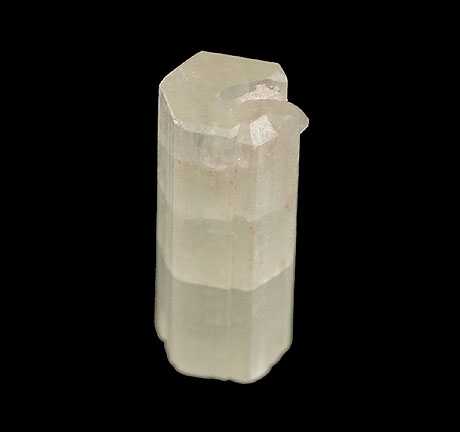5 Examples of Nuclear Waste Explained
Examples of nuclear waste are; used radioactive safety gear, uranium tailings, spent fuel rods, radioactive containment vessels, and medical spectroscopic implements.
This article discusses the examples of nuclear waste, as follows;
1). Used Radioactive Safety Gear (as one of the Examples of Nuclear Waste)
Used safety gear from nuclear facilities, represent an example of low-level radioactive waste.
This personal protective equipment (PPE) comprises of items like coveralls, helmets, safety boots, gloves, and respirators.
Their status as nuclear wastes occurs mostly as a result of exposure to radiation for significant length of time. Such exposure is possible in all facilities where nuclear energy is used in any form; including nuclear power plants, research laboratories, and centers for nuclear medical procedures.
Arguably the most common point of exposure to radiation that can contaminate personal protective equipment is power plants, due to the large scale of nuclear materials and processes occurring in such facilities.
Aside exposure to harmful radiation, personal protective equipment can become contaminated by direct contact with radioisotopic materials.
2). Uranium Tailings
Uranium tailings are radioactive waste materials in solid or liquid form, which are generated during the milling or processing of radioactive ore materials [1].
Also called uranium mill tailings (UMT), uranium tailings come primary uranium ore as residue from processes involved in ore refinement. This example of nuclear waste often has the consistency of fine sand (that is; when it occurs as a solid), and contains a combination of uranium particles, radioactive decay products, and heavy metals.
What happens to uranium mill tailings after they have been produced, comprises of treatment, conditioning, storage and disposal.
Tailing ponds of uranium are large surface-impoundment storage systems where the tailings are isolated after preliminary treatment by acid leaching and pyrolytic vitrification, among other measures [3].
As earlier stated, uranium mill tailings may also occur in liquid form, as a radioactive sludge or slurry. This residue often results from acid leaching or water-based detoxification of the waste.

3). Spent Fuel Rods (as one of the Examples of Nuclear Waste)
Spent fuel rods are made of the remnants of nuclear fuel that has been used for power generation in a nuclear energy facility.
The chemical composition of spent fuel rods comprises dominantly of uranium oxide, which occurs as degraded ceramic pellets that are enclosed in metallic cladding or tubes known as fuel rods.
What is done with spent fuel rods may include cooling, reprocessing, storage, and disposal; depending on the specific composition and condition of the rods.
Spent fuel rods can last can last for thousands of years as a potent nuclear fuel containing harmful radiation, during which they must be isolated from the vital components of the ecosystem.
Spent fuel rods are more radioactive than most other types of nuclear wastes, because they contain predominantly radioisotopes and their derivatives, unlike other nuclear wastes that have significant proportion of non-radionuclide components.
Spent fuel pools, or spent fuel rod pools, are surface impoundments in which the spent fuel rods are stored and cooled until they can be disposed of. These impoundment systems are often used for short-tern storage, and can hold spent fuel for up to 10 years and above.
4). Radioactive Containment Vessels
Containers for nuclear waste like dry casks, are vessels which are designed to effectively store radioactive material for a significant length of time.
Dry casks are made of radiation-resistant materials like carbon steel, and may be enclosed in an outer shell of steel or concrete.
With adequate maintenance, radioactive containment vessels have a lifespan of up to 50 years and above. After this period, they become nuclear waste.
As an example of low-level waste, expired radioactive containment vessels can be disposed of by burial in shallow landfills.
5). Medical Spectroscopic Implements (as one of the Examples of Nuclear Waste)
Used and expired medical spectroscopic implements are a classic example of radioactive waste produced in the practice of nuclear medicine.
Nuclear medicine waste (or rather; nuclear medical waste) is a form of low-level waste that comes from medical procedures that make active use of nuclear energy in the form of alpha, beta and gamma radiation.
Examples of nuclear medical waste are cotton swabs, lab coats, gloves, needles, and syringes that have been exposed to and contaminated by significant levels of nuclear radiation [5].
Aside the above listed, all utensils and clothes touched by patients undergoing radioactive therapy may also be seen as nuclear waste.
Radioactive medical waste is disposed of by decontamination (pretreatment), conditioning, storage and shallow burial. These measures are sufficient since the waste is categorized as low-level in terms of its nuclear potency.
In some cases, nuclear medical waste can be managed effectively by long-term storage, because this allows short-half-life contaminants to decay, so that the materials may once again become safe for the environment [4].

Conclusion
Examples of nuclear waste are;
1. Used Radioactive Safety Gear
2. Uranium Tailings
3. Spent Fuel Rods
4. Radioactive Containment Vessels
5. Medical Spectroscopic Implements
References
1). Al-Hashimi, A.; Evans, G.J.; Cox, B. (1996). "Aspects of the permanent storage of uranium tailings." Water Air Soil Pollut 88, 83–92 (1996). Available at: https://doi.org/10.1007/BF00157414. (Accessed 5 February 2023).
2). Biello, D. (2009). "Spent Nuclear Fuel: A Trash Heap Deadly for 250,000 Years or a Renewable Energy Source?" Available at: https://www.scientificamerican.com/article/nuclear-waste-lethal-trash-or-renewable-energy-source/. (Accessed 5 February 2023).
3). Landa, E. R. (2004). "Uranium mill tailings: nuclear waste and natural laboratory for geochemical and radioecological investigations." J Environ Radioact. 2004;77(1):1-27. Available at: https://doi.org/10.1016/j.jenvrad.2004.01.030. (Accessed 5 February 2023).
4). Ravichandran, R.; Binukumar, J. P.; Sreeram, R.; Arunkumar, L. S. (2011). "An overview of radioactive waste disposal procedures of a nuclear medicine department." J Med Phys. 2011 Apr;36(2):95-9. Available at: https://doi.org/10.4103/0971-6203.79692. (Accessed 5 February 2023).
5). Tabish, S. A.; Showkat, K. H.; Reyaz, R.; Rather, T. A. (2010). "Radioactive Waste Management in A Hospital." International Journal of Health Sciences 4(1):39-46. Available at: https://www.researchgate.net/publication/261726955_Radioactive_Waste_Management_in_A_Hospital. (Accessed 5 February 2023).




